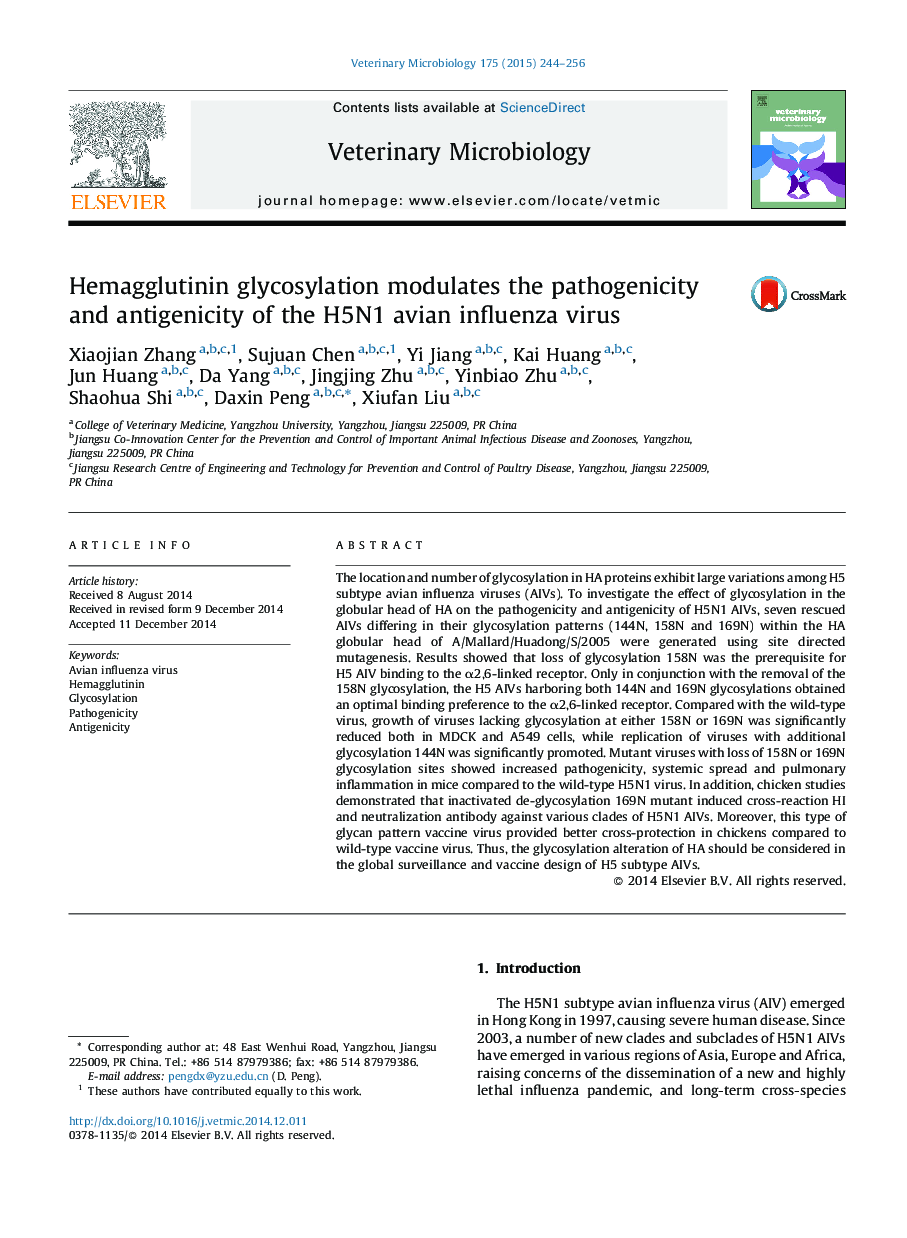| کد مقاله | کد نشریه | سال انتشار | مقاله انگلیسی | نسخه تمام متن |
|---|---|---|---|---|
| 5800057 | 1555354 | 2015 | 13 صفحه PDF | دانلود رایگان |

- Glycosylation on the HA is critical for viral binding preference and replication.
- Loss of glycosylation sites on the HA will increase viral pathogenicity in mice.
- Alteration glycosylation on the HA will induce broad protection.
- We report a new method for vaccine design of H5 subtype AIVs.
The location and number of glycosylation in HA proteins exhibit large variations among H5 subtype avian influenza viruses (AIVs). To investigate the effect of glycosylation in the globular head of HA on the pathogenicity and antigenicity of H5N1 AIVs, seven rescued AIVs differing in their glycosylation patterns (144N, 158N and 169N) within the HA globular head of A/Mallard/Huadong/S/2005 were generated using site directed mutagenesis. Results showed that loss of glycosylation 158N was the prerequisite for H5 AIV binding to the α2,6-linked receptor. Only in conjunction with the removal of the 158N glycosylation, the H5 AIVs harboring both 144N and 169N glycosylations obtained an optimal binding preference to the α2,6-linked receptor. Compared with the wild-type virus, growth of viruses lacking glycosylation at either 158N or 169N was significantly reduced both in MDCK and A549 cells, while replication of viruses with additional glycosylation 144N was significantly promoted. Mutant viruses with loss of 158N or 169N glycosylation sites showed increased pathogenicity, systemic spread and pulmonary inflammation in mice compared to the wild-type H5N1 virus. In addition, chicken studies demonstrated that inactivated de-glycosylation 169N mutant induced cross-reaction HI and neutralization antibody against various clades of H5N1 AIVs. Moreover, this type of glycan pattern vaccine virus provided better cross-protection in chickens compared to wild-type vaccine virus. Thus, the glycosylation alteration of HA should be considered in the global surveillance and vaccine design of H5 subtype AIVs.
Journal: Veterinary Microbiology - Volume 175, Issues 2â4, 25 February 2015, Pages 244-256